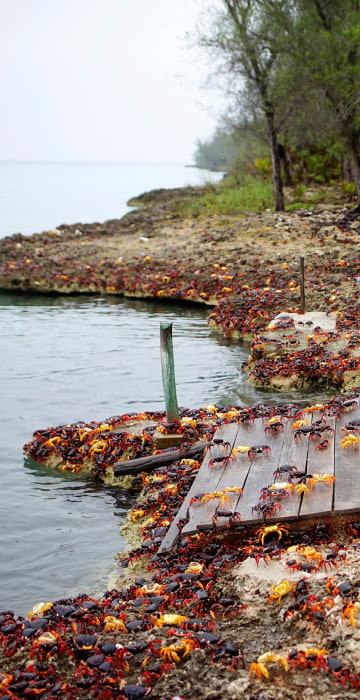
World
Crabs Invade Cuba's Bay of Pigs
Millions of red, yellow and black land crabs migrated from the forest to the beaches of Playa Larga, Cuba.

Cuba's Bay of Pigs has been invaded again, this time not by U.S.-backed anti-Castro forces, but by millions of red, yellow and black land crabs.
Each year, after the first spring rains, the crabs march for days from the surrounding forests to the bay on Cuba's southern coast to spawn in the sea, wreaking havoc along the way.
Above, crabs coming from the surrounding forests gather near the sea to spawn on April 21, 2017 in Playa Giron, Cuba.
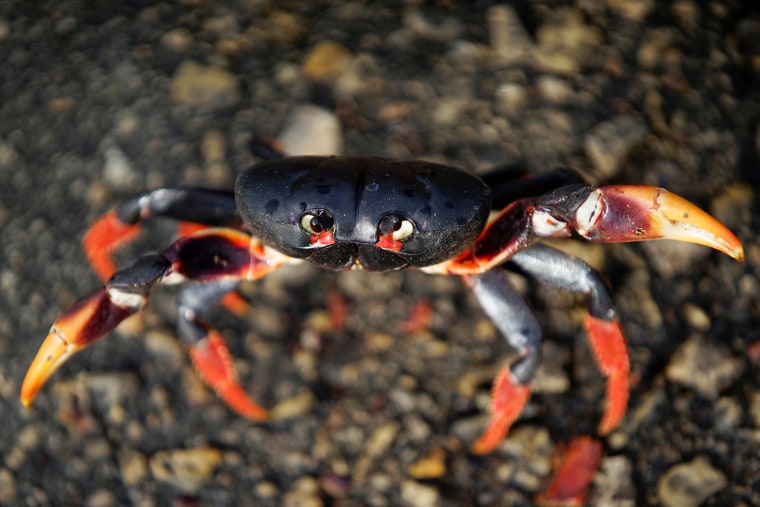
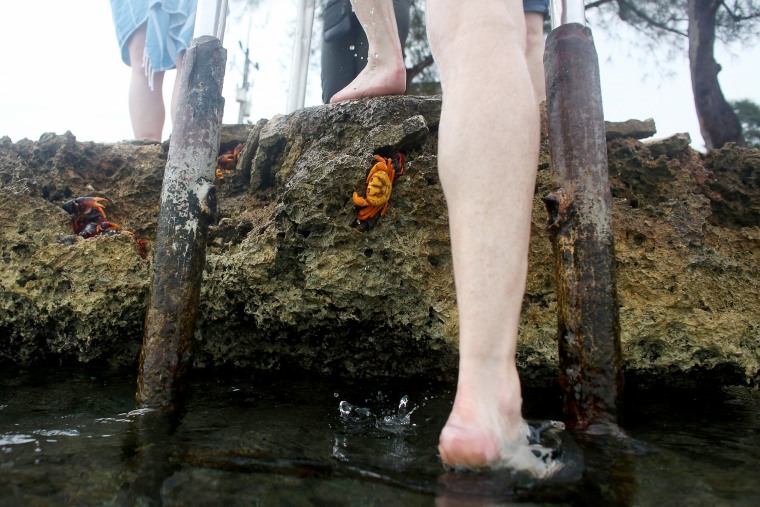


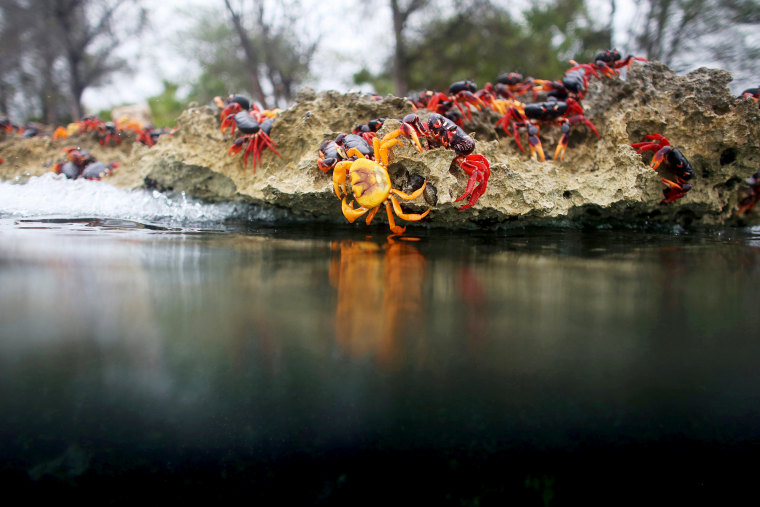
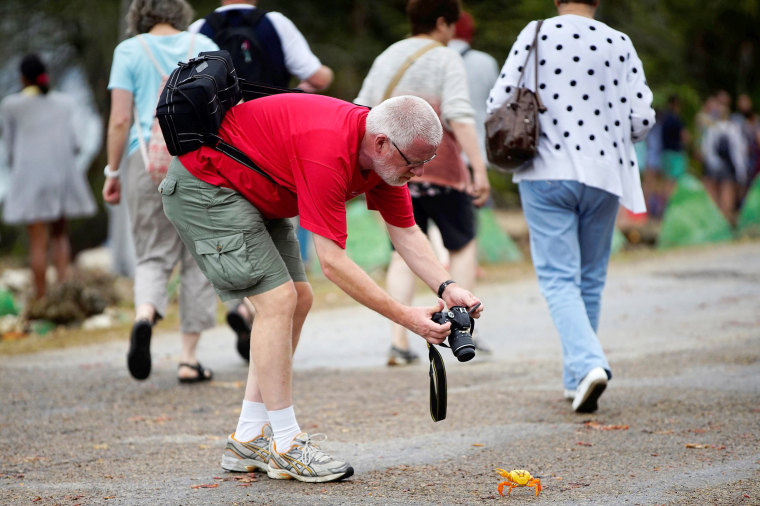
"It's very surprising and impressive to see so many crabs in one go and to watch them crossing so quickly," said 36-year-old French tourist Emilie Lannegrand, adding it was "a little heartbreaking" to see so many crushed on the road.
Above, a tourist photographs a crab.
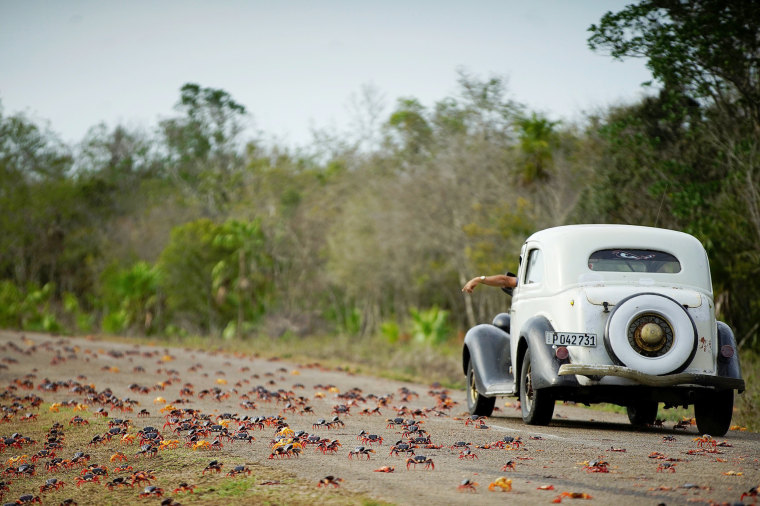

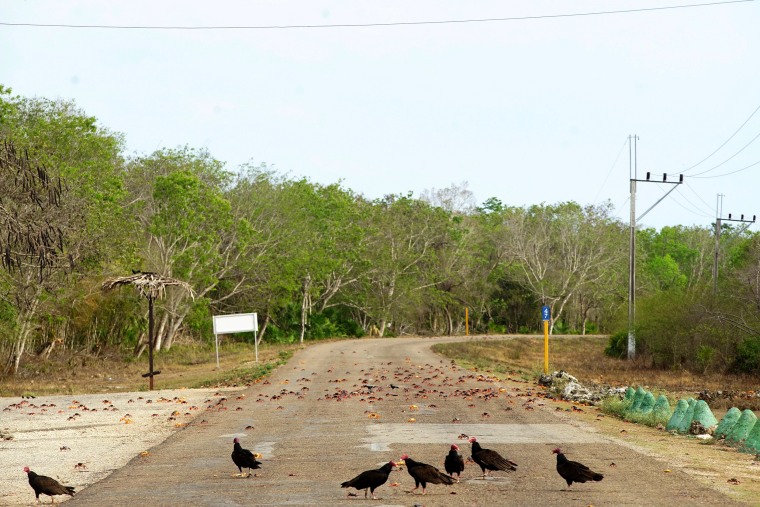
Ito Molina, 45, said tourists would happily pay $10 for tire repair, a princely sum compared with the average state salary of around $25 per month. "All the cars pass along this road, and they all get punctures," he said. "So we stand there and repair the tires."
Above, vultures eat smashed crabs on a highway.